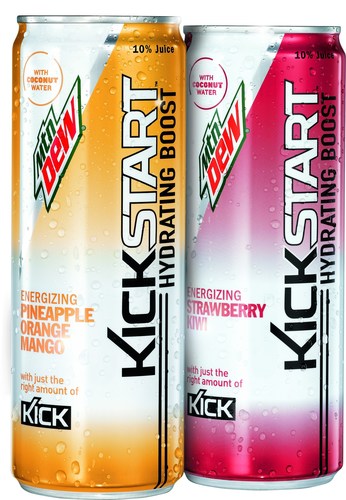
Per Coca-Cola’s news release a couple weeks back, the soda giant’s Fuze brand has joined the company’s billion dollar club this year (story here). Fuze expanded into teas back in 2012 and surpassed one billion dollars in annual sales just two years later, which may make it one of the fastest brands under Coca-Cola’s stewardship to achieve this milestone. Regardless of their geographical footprint (40 markets and growing) or product assortment (30+ Fuze skus between juice, tea, and liquid enhancer flavors), reaching one billion dollars this quickly is surprising. A key question to answer may be what happened in the past two years to help Fuze become one Coca-Cola’s roster of 20 billion dollar brands.
In 2007, Coca-Cola bought Fuze and promptly brought the juice brand into their beverage roster. At that time, Fuze existed as a primary competitor to SoBe’s line of fruit juices owned by Pepsi. The importance of tea in the brand’s portfolio emerged in 2009 when Fuze tea was part of the fountain drink options in Subway’s sandwich franchise restaurants. Since then, the hydration brand has emphasized tea more than juices. Securing distribution in Subway was a critical step toward Fuze’s current status. Not only were they earning sales across Subway locations, their availability increased consumer exposure to Fuze as a ready-to-drink tea and a viable alternative to Coca-Cola’s soda offerings. Even Samir Bhutada, Coke’s global director of tea and ready-to-drink coffee, mentioned that part of Fuze’s popularity was related to beverage trends around the ready-to-drink tea category because it delivers on great testing refreshment and natural goodness.
Another important step in Fuze’s history came in 2012, when Coca-Cola and Nestle Waters amended their Beverage Partners Worldwide distribution arrangement. Save for Canada and a few other geographies, Nestle Waters would retain distribution rights for Nestea. This in turn allowed Coca-Cola to redeploy efforts to their own stable of healthy refreshments. Gold Peak and Fuze became the main benefactors of the company’s increased support. This support materialized in both marketing and trade support. With Nestea returning to Nestle Waters’ distribution network, this opened up more space for other beverages to grow their footprint within Coca-Cola’s distribution network. As a result of this, Fuze cultivated a stronger international presence.

The Coca-Cola system also support the brand by cranking out drink flavors built on its foundation of green tea and black tea. With over 30 Fuze tea variants, consumers looking for tea options would not have any trouble picking a tea under the Fuze portfolio. Most recently, Coca-Cola has extended the Fuze brand beyond bottled juices and teas. Coca-Cola launched Fuze Tea Drops in the Canadian marketplace, building more momentum behind this brand with three flavors of liquid enhancers. To support this rollout, the company activated Fuze Tea Drops with in-store signage and branded merchandising racks across participating Canadian retailers. It’s also telling that Fuze was one of the select brands among Coca-Cola’s liquid enhancer portfolio, joining Dasani, Powerade, and Minute Maid as beverages available in this format.
In Canada, Nestea is still being distributed by Coca-Cola so Fuze tea may be limited in its availability. Most Canadians only experience Fuze as a bottled juice unless they choose the brand where Coca-Cola Freestyle machines are available or purchase Subway sandwiches. With Fuze tea drops, Canadians are one step closer toward experiencing Fuze the way other consumers get to enjoy it. If Fuze tea drops sell well and Freestyle machines back up the brand’s popularity, there may be finally be Fuze tea coming to Canada. At that time, Canadians will join other countries that further contribute to Fuze’s annual sales of a billion dollars.





